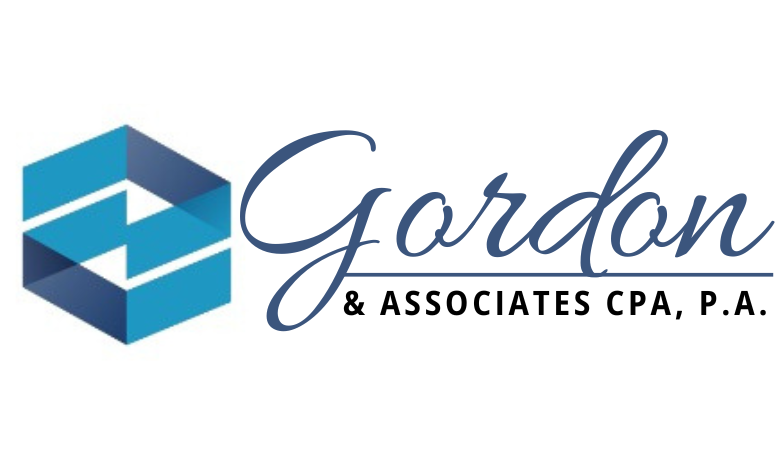The Benefits of Tax-Advantaged Retirement Accounts:
A Comprehensive Guide

Saving for retirement is one of the most important financial goals for any individual or business owner. Tax-advantaged retirement accounts not only help you build a secure financial future but also provide immediate and long-term tax benefits. Understanding the types of tax-advantaged accounts available and how they work can empower you to make smarter investment decisions while reducing your tax burden.
What Are Tax-Advantaged Retirement Accounts?
Tax-advantaged retirement accounts are savings plans that offer tax benefits to encourage individuals to save for retirement. These accounts can either:
- Reduce taxable income in the year of contribution (tax-deferred accounts), or
- Offer tax-free growth and withdrawals under certain conditions (tax-exempt accounts).
Types of Tax-Advantaged Retirement Accounts
1. Traditional IRA (Individual Retirement Account)
A Traditional IRA allows you to make pre-tax contributions, reducing your taxable income for the year. Taxes are deferred until you withdraw funds in retirement.
- Contribution Limit: $6,500 per year ($7,500 for individuals aged 50 and older in 2024).
- Tax Benefit: Immediate tax deduction for contributions.
- Drawback: Withdrawals in retirement are taxed as ordinary income.
2. Roth IRA
A Roth IRA uses after-tax dollars for contributions, meaning you won’t get a tax deduction upfront. However, the account grows tax-free, and qualified withdrawals in retirement are also tax-free.
- Contribution Limit: Same as Traditional IRA but subject to income limits.
- Tax Benefit: Tax-free growth and withdrawals.
- Drawback: No immediate tax deduction for contributions.
3. 401(k)
A 401(k) is an employer-sponsored retirement plan that allows employees to make tax-deferred contributions directly from their paycheck. Employers often offer matching contributions.
- Contribution Limit: $23,000 in 2024 ($30,000 for those aged 50 and older).
- Tax Benefit: Contributions reduce taxable income; growth is tax-deferred.
- Drawback: Withdrawals are taxed as ordinary income in retirement.
Roth 401(k):
Some employers offer Roth 401(k) options, combining the higher contribution limits of a 401(k) with the tax-free growth of a Roth IRA.
4. SEP IRA (Simplified Employee Pension)
Designed for self-employed individuals and small business owners, a SEP IRA offers higher contribution limits based on business income.
- Contribution Limit: The lesser of $66,000 or 25% of compensation in 2024.
- Tax Benefit: Contributions are tax-deductible, and growth is tax-deferred.
- Drawback: Contributions are subject to withdrawal taxes.
5. SIMPLE IRA (Savings Incentive Match Plan for Employees)
This plan is tailored for small businesses with fewer than 100 employees and offers a simpler alternative to 401(k)s.
- Contribution Limit: $16,000 in 2024 ($19,000 for those aged 50 and older).
- Tax Benefit: Contributions reduce taxable income; growth is tax-deferred.
- Drawback: Lower contribution limits compared to 401(k).
6. Health Savings Account (HSA)
While not technically a retirement account, an HSA offers triple tax benefits:
- Tax-deductible contributions.
- Tax-free growth.
- Tax-free withdrawals for qualified medical expenses.
Unused funds can be invested and used tax-free in retirement for medical expenses or taxed like a Traditional IRA for other expenses.
Key Benefits of Tax-Advantaged Retirement Accounts
1. Immediate Tax Savings
For accounts like Traditional IRAs and 401(k)s, contributions reduce your taxable income for the year, resulting in a lower tax bill.
2. Tax-Deferred Growth
Tax-deferred accounts allow investments to grow without being diminished by taxes annually. This compounding effect can significantly increase the value of your retirement savings over time.
3. Tax-Free Withdrawals
Roth accounts provide tax-free income in retirement, which is particularly valuable if you expect to be in a higher tax bracket in the future.
4. Employer Contributions
Employer-sponsored plans like 401(k)s often include matching contributions, providing free money to boost your retirement savings.
5. Flexibility for Self-Employed Individuals
Plans like SEP IRAs and SIMPLE IRAs give business owners and self-employed individuals tax-saving opportunities while building retirement funds.
How to Choose the Right Account
Consider Your Current and Future Tax Bracket
- If you expect your tax bracket to be lower in retirement, prioritize Traditional accounts for immediate tax savings.
- If you anticipate a higher tax bracket in retirement, opt for Roth accounts to lock in tax-free withdrawals.
Maximize Employer Contributions
Contribute enough to your 401(k) to receive the full employer match—it’s essentially free money.
Diversify Your Tax Strategy
Contribute to both Traditional and Roth accounts if possible, creating a mix of taxable and tax-free income sources in retirement.
Tips for Maximizing Tax-Advantaged Accounts
- Start Early: The longer your investments have to grow, the greater the compounding benefits.
- Maximize Contributions: Aim to contribute the maximum allowable amount each year to reduce taxable income and build wealth faster.
- Use Catch-Up Contributions: If you’re 50 or older, take advantage of higher contribution limits to accelerate savings.
- Invest Wisely: Choose a diversified portfolio aligned with your risk tolerance and retirement timeline.
- Work with a Financial Advisor: Get personalized advice to optimize your contributions and investment strategy.
Tax-advantaged retirement accounts are essential tools for building a secure financial future while reaping significant tax benefits along the way. Whether you’re self-employed, a business owner, or an employee, these accounts provide opportunities to save smarter, grow your wealth, and enjoy financial freedom in retirement.
Need help selecting the right tax-advantaged retirement account? Contact us today to develop a customized retirement savings strategy tailored to your financial goals. Let’s secure your future together!
Subscribe to our newsletter to receive our latest blog directly to your inbox.
- Business Financial Management
- Regulations and Compliance
- Tax Planning and Compliance
- Tax Planning and Strategies
- Conducting a Comprehensive Year-End Financial Review: A Guide for Small Business Owners
 A thorough year-end financial review is essential for assessing your business’s performance and planning for the future. Analyze revenue, expenses, cash flow, debt, and tax obligations to identify areas for growth and improvement. Reviewing key performance indicators (KPIs) and setting financial goals will help you start the new year on solid ground. Need expert assistance with your year-end financial review? Contact us today to ensure your business is positioned for success!
A thorough year-end financial review is essential for assessing your business’s performance and planning for the future. Analyze revenue, expenses, cash flow, debt, and tax obligations to identify areas for growth and improvement. Reviewing key performance indicators (KPIs) and setting financial goals will help you start the new year on solid ground. Need expert assistance with your year-end financial review? Contact us today to ensure your business is positioned for success! - Developing an Effective Budget for the New Year: A Step-by-Step Guide for Small Business Owners
 Start the new year with a strong financial foundation by creating a well-structured budget. Assess your past financial performance, set clear business goals, and accurately estimate revenue and expenses. Allocate funds strategically, prepare for unexpected costs, and monitor your budget regularly to stay on track. Need expert guidance on financial planning? Contact us today to ensure your business is set up for success in the new year!
Start the new year with a strong financial foundation by creating a well-structured budget. Assess your past financial performance, set clear business goals, and accurately estimate revenue and expenses. Allocate funds strategically, prepare for unexpected costs, and monitor your budget regularly to stay on track. Need expert guidance on financial planning? Contact us today to ensure your business is set up for success in the new year! - Improving Cash Flow During the Holiday Season: Practical Tips for Small Business Owners
 The holiday season can bring both opportunities and challenges for small businesses. To maintain strong cash flow, forecast seasonal trends, speed up receivables with early payment incentives, and manage expenses wisely. Optimize inventory, explore financing options if needed, and maximize revenue through strategic promotions. Regular cash flow monitoring and post-holiday planning are key to long-term stability. Want expert guidance on managing holiday finances? Contact us today for personalized financial strategies!
The holiday season can bring both opportunities and challenges for small businesses. To maintain strong cash flow, forecast seasonal trends, speed up receivables with early payment incentives, and manage expenses wisely. Optimize inventory, explore financing options if needed, and maximize revenue through strategic promotions. Regular cash flow monitoring and post-holiday planning are key to long-term stability. Want expert guidance on managing holiday finances? Contact us today for personalized financial strategies!

